Ever picked up your favorite necklace only to find it covered in ugly orange stains? Rust can sneak onto your jewelry when moisture, air, or even skin oils sit too long. It doesn’t just dull the shine, it can actually weaken the metal over time.
The good news? You don’t need fancy tools or expensive cleaners to fix it. In fact, most rust can be removed with safe, simple items already in your kitchen.
This guide will walk you through exactly how to clean rusty jewelry and bring back its original sparkle. We’ll also share tips to prevent tarnish and keep your pieces shining longer. Let’s get into it!
Wanna check the latest trendy jewelry? Check out this guide on the latest jewelry trends in Pakistan.
Step By Step Guide on How To Clean Rusty Jewelry
Step 1: Identify Rust Spots Before You Start Cleaning
Before you dive into cleaning, inspect your jewelry closely under good lighting. Look for reddish-brown spots, dullness, or rough patches, these are classic signs of rust and oxidation. Pay extra attention to joints, clasps, and hidden crevices where corrosion builds up easily.
Rust often appears on costume jewelry, steel chains, or low-quality metal that’s been exposed to moisture. Even if it’s been sitting untouched, air humidity can slowly trigger oxidation on your favorite pieces. The sooner you catch these signs, the easier they are to treat.
Use a soft cloth or cotton swab to gently rub the surface—if any orange residue comes off, you’ve got rust. Make sure to separate rusty pieces from your clean ones to prevent spreading corrosion. Spotting the damage early helps protect your jewelry and saves time during cleaning.
Step 2: Gather Mild Cleaning Essentials and Tools
Before you start scrubbing off that stubborn rust, it’s important to have all your cleaning supplies ready. Using the right tools ensures you clean your jewelry effectively without causing any damage.
Here’s what you’ll need:
- Baking soda – a gentle abrasive to help lift rust.
- White vinegar – works as a natural cleaning agent.
- Soft toothbrush – for scrubbing without scratching the surface.
- Microfiber cloth – ideal for drying and polishing jewelry.
- Small bowl – to mix your cleaning solution.
- Dish soap – adds extra cleaning power.
- Spoon – for easy mixing.
If you’re cleaning delicate or plated jewelry, extra care is needed. Always choose non-abrasive tools like cotton swabs or a baby toothbrush to prevent scratches or dulling. Preparing everything in advance keeps the process smooth and efficient.
Step 3: Soak in Vinegar Solution to Dissolve Rust Naturally
acidic solution breaks down surface rust without damaging most metals. Make sure your jewelry is fully submerged for best results.
Let the jewelry soak for 15 to 30 minutes depending on how rusty it is. The vinegar reacts with the oxidized layer, softening it for easier removal. Avoid leaving it in too long if your piece is gold-plated or delicate.
Once done soaking, use a soft-bristle toothbrush to gently scrub the rusted spots. Focus on areas like chain links and clasps where rust tends to collect. Rinse thoroughly with clean water and pat dry with a microfiber cloth.
Step 4: Apply Dish Soap and Warm Water Rinse for Grease and Grime
If your jewelry looks dull or greasy, a simple dish soap soak can work wonders. This method is ideal for lifting everyday grime, oily buildup, and even surface rust—without damaging delicate metals or stones.
Here’s how to clean rusty jewelry using dish soap and warm water:
- Mix a cleaning solution: In a small bowl, combine a few drops of mild dish soap with warm (not hot) water. This gentle mix breaks down oils and dirt safely.
- Soak the jewelry: Place your rusty jewelry in the bowl and let it soak for 10–15 minutes. Ensure every part, including clasps and chain links, is fully submerged to loosen rust and debris.
- Gently scrub: Use a soft-bristle toothbrush to clean the jewelry. Focus on rust-prone areas and crevices. Avoid hard brushes or abrasive tools, especially if your piece is gold-filled, silver-plated, or includes delicate settings.
- Rinse thoroughly: Run the jewelry under lukewarm water to remove all soap residue. Be extra careful with glued stones or fragile designs—avoid over-soaking them.
- Dry and air out: Pat the jewelry dry with a microfiber cloth. Let it air-dry completely before storing. Trapped moisture can trigger rust again.
This step is perfect for gently cleaning tarnished jewelry while maintaining its shine. For best results, repeat the process monthly or whenever you notice buildup.
Step 5: Combine Salt and Baking Soda for Electrochemical Rust Lift
For jewelry with stubborn rust spots, this electrochemical cleaning method is both powerful and safe. It uses a simple chemical reaction to lift rust without harsh scrubbing—perfect for restoring shine to tarnished metal pieces.
Here’s how to clean rusty jewelry using salt, baking soda, and aluminum foil:
- Line a bowl with aluminum foil: Use a glass bowl and place aluminum foil inside with the shiny side facing up—this is essential for triggering the reaction.
- Create the cleaning solution: Mix 1 tablespoon of baking soda and 1 tablespoon of salt into warm water. Stir well until fully dissolved.
- Soak your jewelry: Place the rusty jewelry into the bowl, making sure it touches the foil. This completes the circuit for the electrochemical reaction.
- Watch the magic happen: Bubbles will start to form—this means the rust is being lifted off the metal surface. Let it sit for 10–15 minutes.
- Rinse and dry: Remove the jewelry, rinse it thoroughly under clean water, and pat dry with a microfiber cloth. Make sure it’s fully dry before storing to prevent new rust.
This rust-lifting hack is especially effective for heavily tarnished or corroded metal jewelry and works without damaging the surface. Use it occasionally to restore shine and remove deep rust naturally.
Step 6: Dry and polish to restore shine
After rinsing your jewelry, gently pat it dry using a soft microfiber cloth. Avoid using tissue paper or rough fabrics, as they can scratch the metal and dull the finish. Drying thoroughly is essential—moisture is a rust magnet and can undo all your cleaning efforts if left behind.
Once your piece is completely dry, take a clean polishing cloth and buff the surface using light, circular motions. This helps restore shine and removes any leftover dullness, especially on gold-plated or silver jewelry.
For an added sparkle, you can apply a gentle, non-abrasive jewelry polish. Just make sure it’s specifically designed for the type of metal you’re working with. Always read the label to ensure it’s safe for delicate finishes and plated pieces. This final step brings back the brilliance and gives your jewelry a polished, like-new appearance.
How to Protect Jewelry Pieces from Future Corrosion?
You can avoid rust altogether by
- Storing your jewelry in a dry, airtight place
- Toss in some silica gel packs to absorb any leftover dampness.
- Always remove your rings or chains before swimming or showering.
- Water—especially salty or chlorinated—triggers tarnish and rust faster than you think. Even sweat can leave metals dull and spotty.
- Use a jewelry-safe anti-tarnish spray or clear nail polish on high-friction areas.
If you are looking for ways to remove tarnish from jewelry check out this blog on How to fix tarnished jewelry.
When to Ask a Pro for Help?
Sometimes, DIY cleaning just won’t cut it, especially if the rust has deeply corroded your jewelry. If you notice pitting, peeling, or discoloration that won’t budge, don’t keep scrubbing. You might end up damaging the metal or loosening stones.
Antique or vintage pieces often need special care, especially those with soft gems like opals or pearls.These materials can’t handle vinegar or baking soda solutions. A certified jeweler knows the safest methods for rust removal and gemstone protection.
Professional jewelry restoration services use ultrasonic cleaners or rust removers made specifically for metals like sterling silver or gold-plated brass. It’s better to spend a little than risk ruining your piece forever.
Final words
Cleaning rusty jewelry doesn’t have to be difficult when you use safe, effective methods like vinegar soaks and baking soda paste. By removing rust gently and storing your pieces properly, you can keep your jewelry looking brand new.
Whether it’s a rusty necklace or tarnished ring, regular care makes all the difference. For high-quality, rust-resistant pieces and care tips, explore the stunning collections at Gleam by Huda. Shine bright because your jewelry deserves to sparkle every day
FAQ’s on Rust Removal and Care
Q: Can vinegar damage gold-plated or gemstone jewelry?
Vinegar is strong, so it might strip off delicate plating or affect soft stones. Always dilute it with water and avoid soaking pieces with glued-in gems. Try a gentler cleaner if you’re unsure about the material.
Q: How often should I clean my jewelry to prevent rust?
Clean your jewelry once a month, especially if you wear it often. Rust and tarnish build up faster with sweat, moisture, and pollution. A quick wipe after use keeps your accessories looking fresh.
Q: Is toothpaste a good DIY rust remover for metal jewelry?
Toothpaste can be too abrasive and scratch the metal surface. It’s better to use a baking soda paste or a mild cleaning solution. These remove oxidation without damaging the finish.
Q: Why does my jewelry rust even when I don’t wear it?
Rust forms due to air humidity, especially if stored improperly. Even unused pieces can oxidize over time if left exposed. Keep them in airtight bags with silica gel packs to block moisture.
Q: Can I use lemon juice or cola to remove rust?
Yes, both have acids that help break down light rust stains. Lemon juice works well on copper or brass, while cola is best for steel. Just rinse well after and dry fully to avoid stickiness or corrosion.
Q: What should I avoid when cleaning rusty jewelry?
Avoid harsh chemicals like bleach or ammonia—they can ruin the finish. Don’t scrub too hard or use rough brushes on plated or delicate items. Always test on a small spot before cleaning the whole piece.

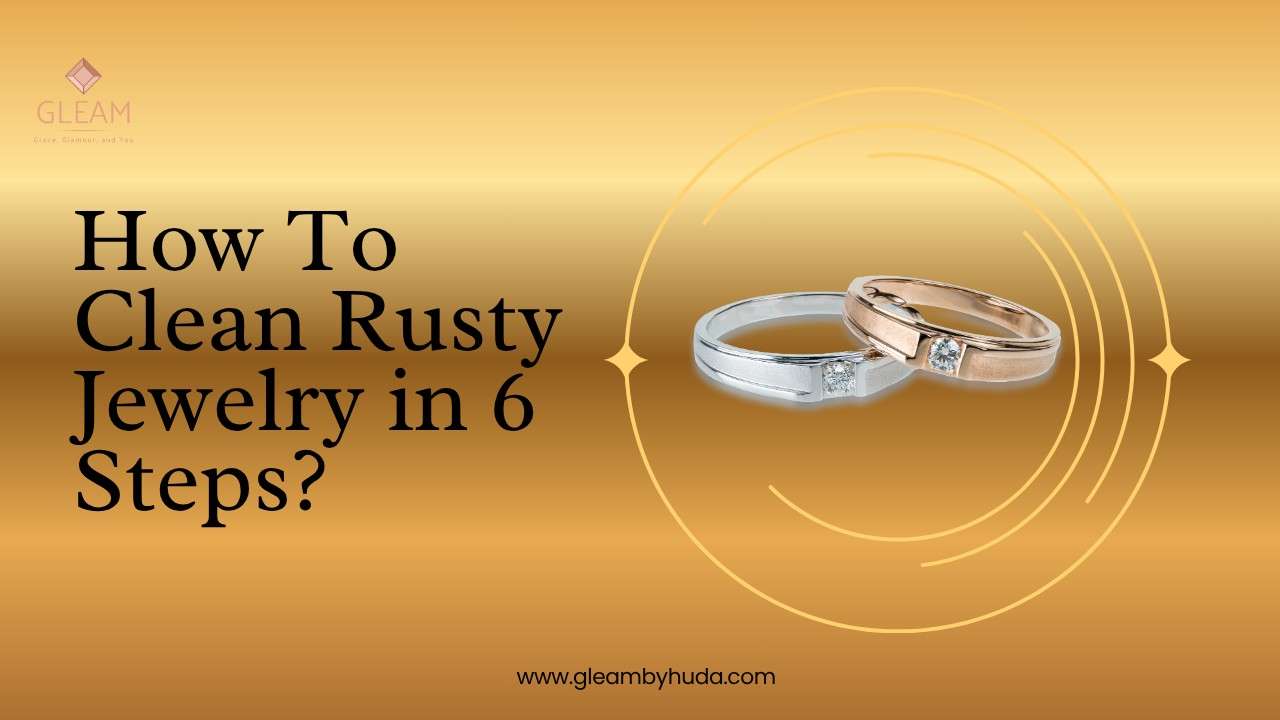
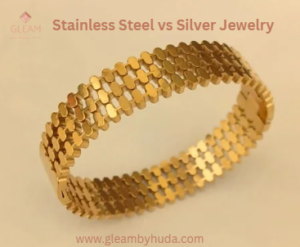
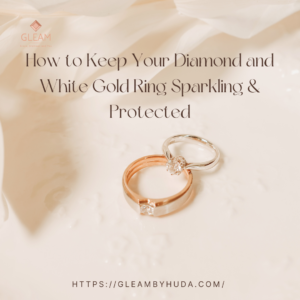
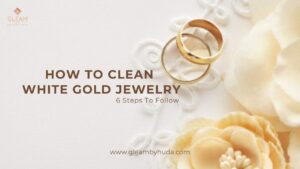
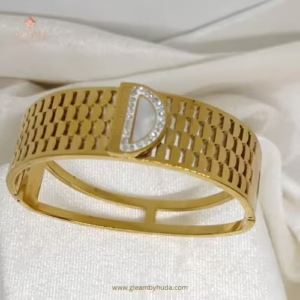 Diva Gold Handcuff
Diva Gold Handcuff 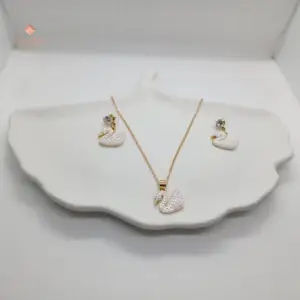 Trendy Duck Jewelry Set
Trendy Duck Jewelry Set 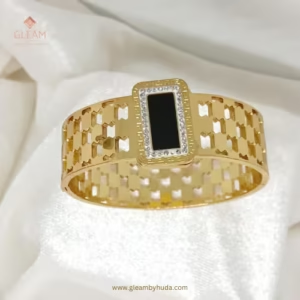 Recta Gold Handcuff
Recta Gold Handcuff